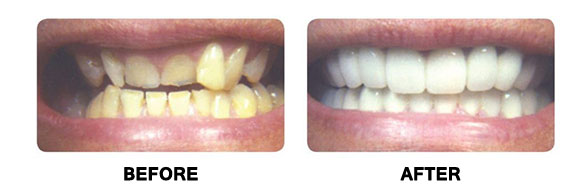Home » What Does a Dental Cleaning Entail?
Many people are scared of the dentist. They may have had a bad experience with a dentist in the past, or else they might just think that dentistry hurts. Do not let fear of the unknown keep you from having a dental cleaning. Dental cleanings are common procedures that can help maintain the health of your teeth. They give your dentist a chance to review your teeth, inspect for problems, and keep them clean.
You may hear your dentist or dental hygienist talk about a prophylaxis. That is nothing to worry about. That is just the fancy term for a dental cleaning to remove plaque. Everyone has plaque. It is the sticky film of bacteria that forms on your teeth and gums. If you do not remove plaque it can harden into tartar. Tarter is harder to remove. It can also lead to tooth decay, cavities, gum disease, and other issues. The point of a dental cleaning is to remove that plaque and tartar.
The first part of a dental cleaning is tartar removal. Traditionally, dentists use a scaler to remove tartar. The scalar is a small metal hook on the end of a tool, which the dentist or hygienist uses to scrape tartar. Dentists may also use other methods to remove tartar, such as ultrasonic waves.
Once your dentist has removed the tartar, they thoroughly clean your teeth. They usually use a special rotating brush and a grainy toothpaste-type substance to polish and clean your mouth. They may use a cleaning toothpaste and then a polish or an all-in-one product.
Once your teeth are cleaned, they will floss them. Flossing is very important. While flossing, they may instruct you on how to floss your teeth if they notice tartar in between the teeth.
Sometimes your dentist will end a cleaning with a fluoride treatment or sealer. These treatments are designed to help strengthen your teeth. You may get instructions not to eat or drink for 30 minutes or so after those treatments.
Dental cleanings are often accompanied by exams. During the exam, your dentist checks out the general health of your mouth. Once a year, these exams are accompanied by x-rays, which let your dentist see inside of your teeth to spot tooth decay that is not visible to the naked eye. Based on the exam and cleaning, the dentist may come up with a plan for additional treatment.
After-Hours Emergencies Or Issues
Call 732-556-9600
Our Services
Dental Emergencies
General Dentistry
Cosmetic Dentistry
Restorative Dentistry
Full Mouth Reconstruction
Smile Makeover

3350 Route 138 W
Bldg 2, Ste 127
Wall Township, NJ 07719
(732) 556-9600
 3350 NJ-138 W. Bldg 2, Ste 127, Wall Township, NJ 07719
732-556-9600
Prices Vary
Comprehensive Dentistry -
5 star rating - based on 25+ reviews in Google
3350 NJ-138 W. Bldg 2, Ste 127, Wall Township, NJ 07719
732-556-9600
Prices Vary
Comprehensive Dentistry -
5 star rating - based on 25+ reviews in Google
